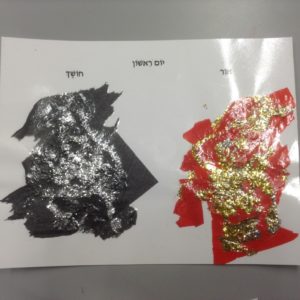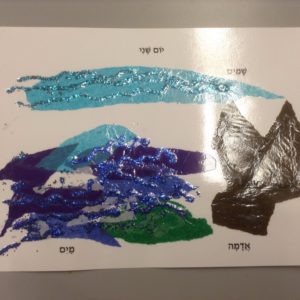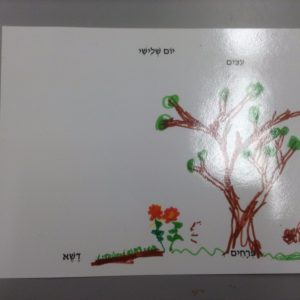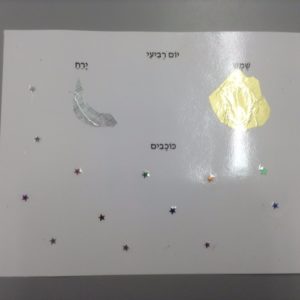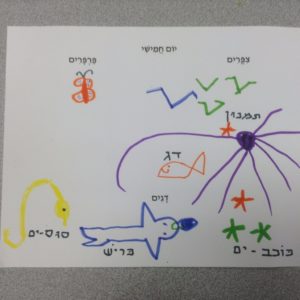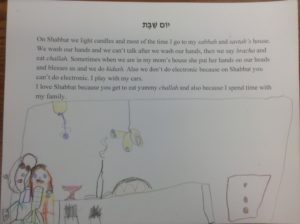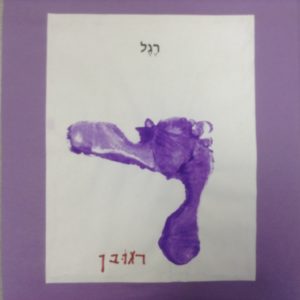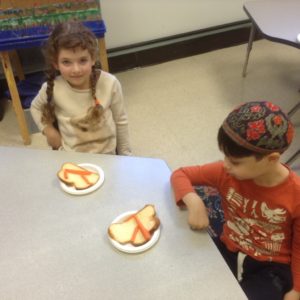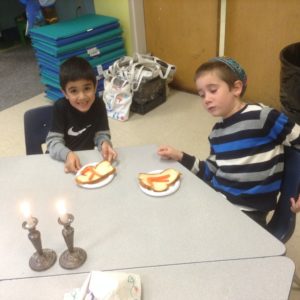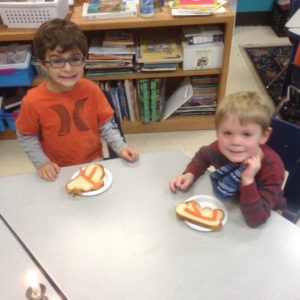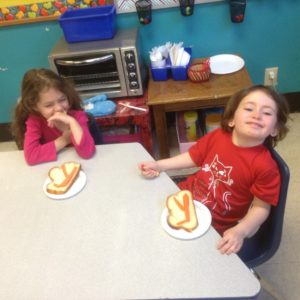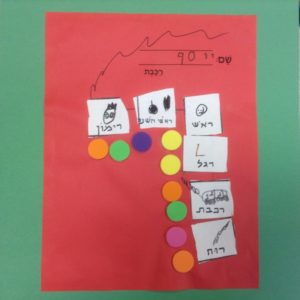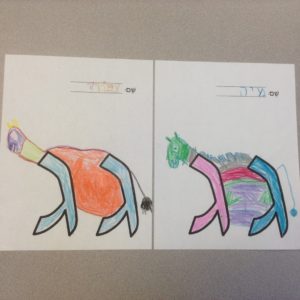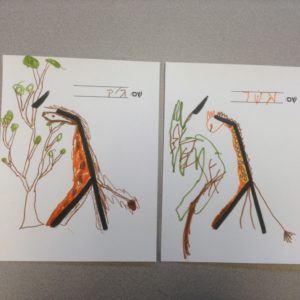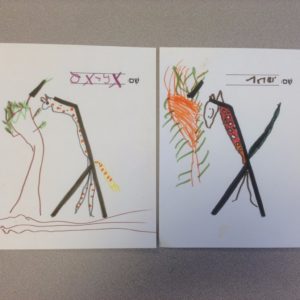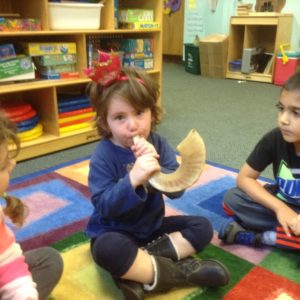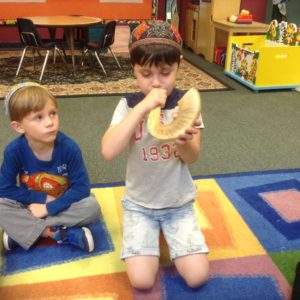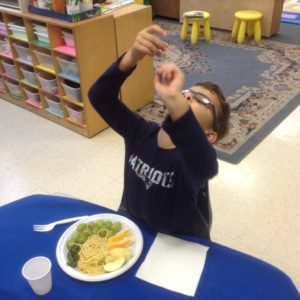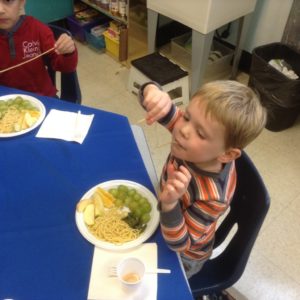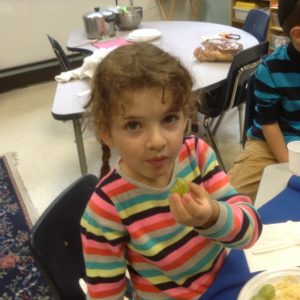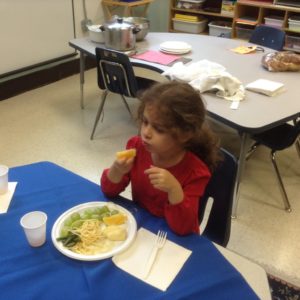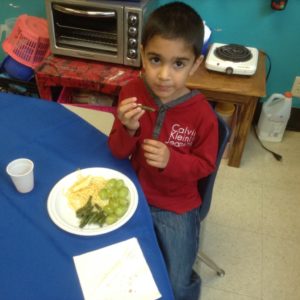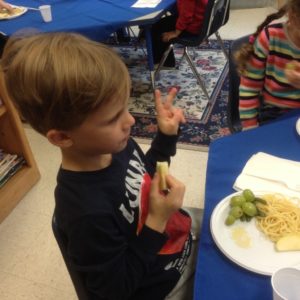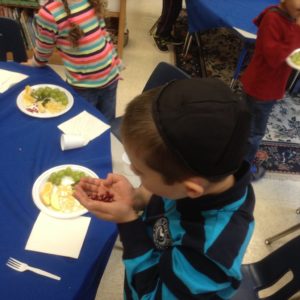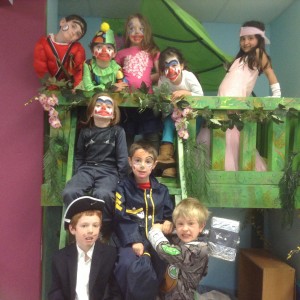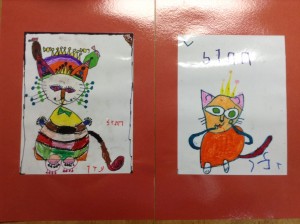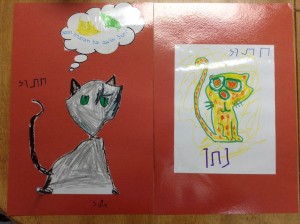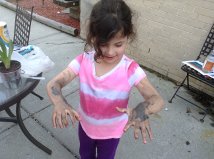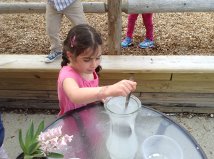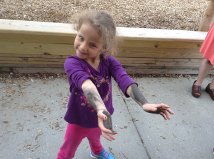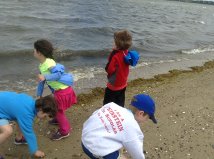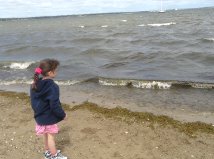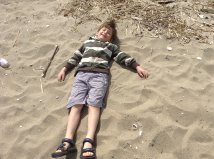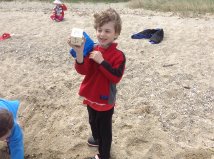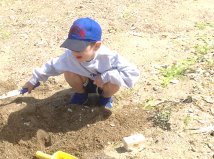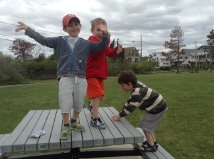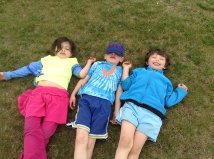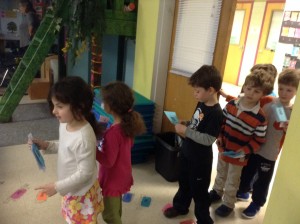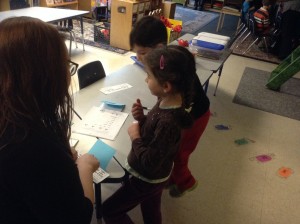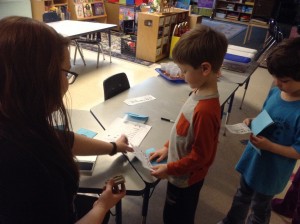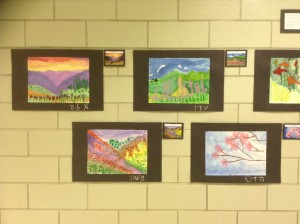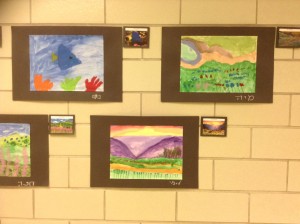We are learning about the creation story in the Torah. During our conversations, we discovered that HaShem (God) created our world so that it could take care of itself. In turn, we as human beings are also responsible for making sure that we treat HaShem’s creations with respect and kindness.
We took this opportunity to interpret this story through art and to enrich our Hebrew vocabulary.
After we learned that there was nothing in the world before creation, I asked my rabbis:
What do you think was the first thing that Hashem created ?
Jake: Hashem needed light to see what can be done.
So from nothing HaShem created or (light) and choshech (darkness) in the first day.
Then what ?
Sasha: God thought about spreading the light again in the sky so God could see all the work God needed to do.
Asher: Hashem separated the mayim (water) from the adamah (earth)and shamayim (sky).
What do you think Hashem created in the third day ?
Joseph: I think animals and people.
Maya: Maybe worms.
Sidney: No. If you put people and animals before trees they would die. They need trees for oxygen.
So Hashem created everything that grows on the earth like: etzim (trees), prachim (flowers), and deshe (grass).
Maya: Hashem gave the trees roots to take care of themselves.
What Do you think next?
Sophie: Animals and fish.
Ruben: People.
Eli: No. The fish will die out because if there is no gravity they will fly and die out.
Sidney: They will go to space.
Eli: They can’t go to space because of the atmosphere, they can’t break the atmosphere.
Sidney: Woodpeckers can break trees so they can break the atmosphere.
Jake: No, they can’t the atmosphere is harder.
Asher: They will die before they get to the atmosphere because when you go up the air it is thin and you can’t breathe.
Then HaShem created the lights in the sky: shemesh (sun), yare’ach (moon), and kochavim (stars).
What happened in the fifth day?
Sasha: I think animals now.
Joseph: And people and school.
Jake: Animals before people because if God created people before animals they will cut down trees and plants and they will not leave room for animals. And if Hashem will create animals before people the animals will just make habitat to live.
Eli: If it is animals, it needs to be only plant-eaters. If you put people before animals they can die out because people didn’t know about predators.
The next was all the life in the water and in the air: dagim (fish), parparim (butterflies), and tziporim (birds).
Finally, the world was ready for human beings and animals: yeled (boy), yalda (girl), and chayot (animals).
And on the last day, HaShem rested and it was Shabbat.
As we prepared our Bereshit book, we noticed how, in each page, the world becomes more complete and more beautiful. We learned to appreciate the wonders and miracles of our creation and our world through this story in the Torah.

